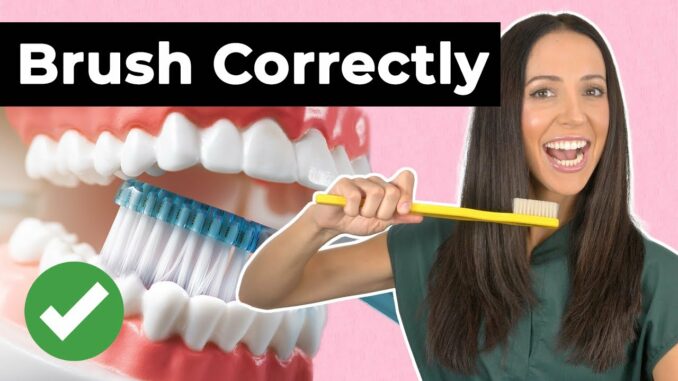
While maintaining good oral hygiene may seem like a mundane task, proper tooth brushing is essential for preventing dental issues such as cavities, gum disease, and bad breath. However, many people overlook the importance of brushing their teeth correctly. In this comprehensive guide, we’ll delve into the intricacies of how to brush your teeth properly to ensure optimal oral health.
Step-by-Step Guide to Proper Tooth Brushing
Step 1: Choose the Right Toothbrush
Selecting the right toothbrush is the first crucial step in effective tooth brushing. Opt for a toothbrush with soft bristles and a small head size that can reach all areas of your mouth easily. Electric toothbrushes are also effective options as they provide consistent brushing motion.
Step 2: Use Fluoride Toothpaste
Fluoride toothpaste helps strengthen tooth enamel and prevent cavities. Apply a pea-sized amount of fluoride toothpaste to your toothbrush.
Step 3: Position Your Toothbrush
Hold your toothbrush at a 45-degree angle to your gums. This angle allows the bristles to clean both your teeth and gums effectively.
Step 4: Brush Gently
Using gentle, circular motions, brush the outer surfaces of your teeth. Start with the outer surfaces of your upper teeth, then move to your lower teeth. Be sure to brush along the gumline to remove plaque and food particles.
Step 5: Brush Inner Surfaces
Next, brush the inner surfaces of your teeth using the same gentle, circular motions. Pay close attention to the insides of your front teeth, as these areas are prone to plaque buildup.
Step 6: Brush Chewing Surfaces
Brush the chewing surfaces of your teeth using a back-and-forth motion. This helps remove food particles and plaque from the pits and grooves of your molars.
Step 7: Don’t Forget Your Tongue
Brush your tongue gently to remove bacteria and freshen your breath. You can also use a tongue scraper for more thorough cleaning.
Step 8: Rinse Thoroughly
After brushing, rinse your mouth thoroughly with water to remove any remaining toothpaste and debris.
Step 9: Check Your Technique
To ensure you’re brushing effectively, check your technique in the mirror. Your teeth should feel clean and smooth after brushing.
Step 10: Brush Twice a Day
Brush your teeth at least twice a day, ideally in the morning and before bed. Brushing after meals can also help prevent plaque buildup and maintain fresh breath.
Tips for Effective Tooth Brushing
- Brush for at least two minutes: Aim to brush your teeth for a minimum of two minutes each time to ensure thorough cleaning.
- Replace your toothbrush regularly: Replace your toothbrush or toothbrush head every three to four months, or sooner if the bristles become frayed.
- Use proper brushing technique: Avoid brushing too hard, as this can damage tooth enamel and irritate gums. Use gentle, circular motions for optimal cleaning.
- Don’t neglect the gumline: Plaque and bacteria can accumulate along the gumline, leading to gum disease. Be sure to brush along the gumline to remove plaque and prevent gum problems.
- Consider additional oral hygiene tools: In addition to brushing, consider using dental floss, interdental brushes, or mouthwash for a more comprehensive oral hygiene routine.
Conclusion
Proper tooth brushing is a fundamental aspect of maintaining good oral health. By following the steps outlined in this guide and incorporating effective brushing techniques into your daily routine, you can help prevent dental issues and keep your smile healthy and vibrant for years to come. Remember, consistency is key—make tooth brushing a regular part of your daily routine for optimal oral hygiene.